Leaning Cleaner

How do I make a non-toxic all-purpose cleaner using vinegar and baking soda ?
Vinegar and baking soda can be combined to create a non-toxic all-purpose cleaner. Ingredients include white vinegar, water, baking soda, a measuring cup, and a spray bottle. Mix one cup of vinegar with one cup of water and add one tablespoon of baking soda. Shake well before using on most surfaces. Test on a small area first and avoid use on certain surfaces such as marble or unfinished wood. This homemade cleaner is effective, environmentally friendly, and cost-efficient.

How do I make a natural floor cleaner that won't leave residue on hardwood floors ?
Hardwood floors are a beautiful addition to any home, but keeping them clean without leaving residue can be a challenge. Here's how to make a natural floor cleaner that won't leave any residue on your hardwood floors: Materials Needed: - 1 gallon of warm water - 1/2 cup of white vinegar - 1/4 cup of rubbing alcohol (70% isopropyl alcohol) - 1/4 cup of dish soap (natural or castile soap is best) - A clean bucket or container - A soft mop or microfiber cloth Steps to Make the Cleaner: Step 1: Mix the Ingredients In a clean bucket or container, mix together the warm water, white vinegar, rubbing alcohol, and dish soap. Stir well until all the ingredients are fully combined. Step 2: Mop Your Floors Dip your soft mop or microfiber cloth into the cleaning solution, making sure it's damp but not overly wet. Wring out any excess liquid before applying it to your hardwood floors. Start at one end of the room and work your way towards the other end, being careful not to let puddles of water sit on your floors. Step 3: Rinse and Dry After you've finished mopping, use a clean, dry cloth to wipe up any remaining moisture. This will help prevent water damage and ensure that no residue is left behind. Tips for Best Results: - Always test your homemade cleaner on a small, inconspicuous area of your floor first to make sure it doesn't cause any damage or discoloration. - Avoid using too much water when cleaning hardwood floors, as excess moisture can seep into the wood and cause damage over time. - If you have pets or children, consider using a natural essential oil like lavender or lemon in your cleaner for added fragrance and antibacterial properties. Just be sure to use only a few drops, as essential oils can be harsh on hardwood surfaces if used in large quantities.

What are the best natural ingredients for making homemade cleaning products ?
Cleaning your home doesn't have to involve harsh chemicals or expensive store-bought products. With a few natural ingredients, you can create effective and eco-friendly cleaning solutions that are safe for your family and the environment. Here are some of the best natural ingredients for making homemade cleaning products: 1. White Vinegar: A versatile and inexpensive cleaning agent that cuts through grease, disinfects surfaces, removes stains and odors, and deodorizes the air. Use it as an all-purpose cleaner, glass cleaner, or oven cleaner. 2. Baking Soda: A gentle yet powerful abrasive that tackles tough cleaning jobs without scratching surfaces. It neutralizes acidic odors, leaves no residue behind, and can be used as a sink and tub scrub, carpet deodorizer, or laundry booster. 3. Lemon Juice: A natural disinfectant and deodorizer that leaves surfaces smelling fresh and clean. It cuts through grease, leaves a pleasant citrus scent, and can be used as an all-purpose cleaner, chrome polish, or hardwater stain remover. 4. Castile Soap: A vegetable-based soap that is gentle on skin and surfaces while still being effective at cutting through dirt and grime. It is biodegradable, eco-friendly, and can be used in various dilutions for different purposes such as an all-purpose cleaner, floor cleaner, or handwash. 5. Essential Oils (Optional): While not strictly cleaning agents, essential oils can enhance the effectiveness of your homemade cleaning products by adding antibacterial properties and a pleasant scent. Popular choices include tea tree oil, lavender oil, and lemon oil.

How can I create an effective window cleaner without using alcohol or ammonia ?
In this guide, we discussed the steps to create a homemade window cleaner that is safe, non-toxic, and environmentally friendly without using alcohol or ammonia. The ingredients needed for this solution are white vinegar, distilled water, lemon juice, liquid soap (preferably natural and biodegradable), and a spray bottle. To make the solution, mix 1 cup of distilled water, 1/4 cup of white vinegar, 1 tablespoon of lemon juice, and 1/2 teaspoon of liquid soap in a spray bottle. Shake the bottle well to ensure that all the ingredients are mixed thoroughly. Test the solution on a small area first before using it on all your windows. Apply the solution onto the window surface and wipe it off with a clean, lint-free cloth or paper towel. Use a circular motion to avoid leaving streaks. Dry the windows completely with a dry cloth or paper towel. Some tips to keep in mind while using this solution are to use a microfiber cloth for best results, avoid cleaning windows in direct sunlight, use a soft-bristled brush for stubborn stains, and store the solution in a cool, dark place to prolong its shelf life. By following these simple steps, you can enjoy clean and streak-free windows while also being environmentally conscious.
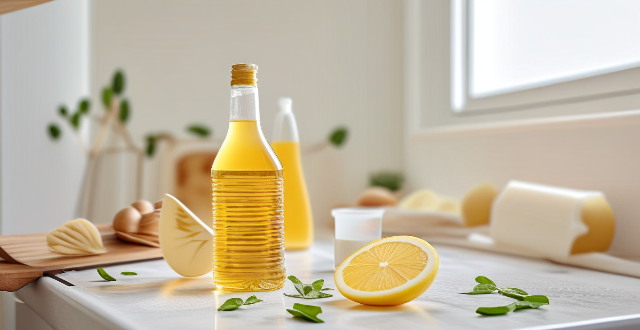
What are some eco-friendly cleaning tips for my home ?
Eco-friendly cleaning tips for your home include using natural products like vinegar, baking soda, and lemon juice; reducing plastic waste by opting for reusable cloths and containers; minimizing water usage during cleaning tasks; choosing energy-efficient appliances; and making your own cleaning solutions. These practices help maintain a clean home while also reducing environmental impact.
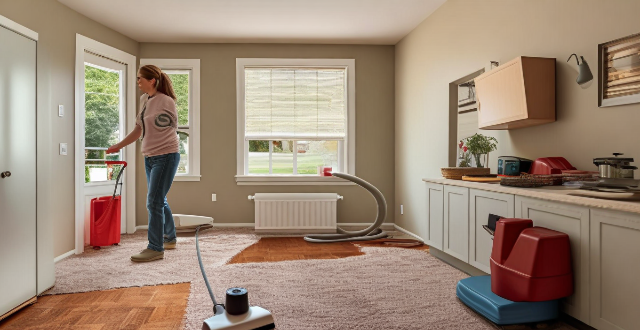
What are some tips for cleaning hard-to-reach areas in my home ?
Cleaning hard-to-reach areas in your home can be challenging, but with the right tools and techniques, it becomes more manageable. Use extendable dusters, flexible brushes, and long-handled tools for better access. Be creative with vacuum attachments, steam cleaners, and magnetic sweepers to simplify the process. Remember safety by using non-slip step stools and wearing gloves. Regular cleaning schedules and making cleaning fun can help maintain these areas.

What are some essential tools for deep cleaning my home ?
Deep cleaning your home requires the right tools for effectiveness and efficiency. Essential tools include a powerful vacuum with a HEPA filter, a multi-purpose steam cleaner with various attachments, highly absorbent and reusable microfiber cloths, sponges, scrub brushes, a squeegee, mops with microfiber heads, cleaning solutions, protective gear, step stools or ladders, extendable dusters, brushes, and storage containers for organization. Having these tools on hand ensures you're prepared for any deep cleaning task while prioritizing safety and efficiency.

What are the best practices for cleaning and sanitizing reusable PPE ?
Best practices for cleaning and sanitizing reusable PPE include removing visible contamination, cleaning the equipment with a suitable agent, and sanitizing it using chemical disinfection, heat sterilization, or UV radiation. Hand washing or machine washing can be used for cleaning, while chemical disinfection involves immersing the PPE in a disinfectant solution, heat sterilization uses high temperatures to kill microorganisms, and UV radiation uses ultraviolet light for the same purpose. It is important to follow the manufacturer's instructions and ensure that the PPE is stored in a clean, dry location until ready for use.

How do I properly clean and sanitize second-hand items before using them ?
The provided text offers a comprehensive guide on properly cleaning and sanitizing second-hand items to ensure their safety for use. The steps are divided into general cleaning procedures, specific instructions for different types of items like clothing, footwear, furniture, kitchenware, toys, and electronics, and additional tips on sanitization. The process involves inspection, initial cleaning, disassembly (if needed), soaking for smaller items, and using appropriate cleaning methods for various items. Sanitizing tips emphasize the wise use of disinfectants, ensuring ventilation, protecting oneself from harsh chemicals, and drying items thoroughly to prevent mold growth. This detailed guide ensures that second-hand items are not only reused but also recycled safely.

What are some quick and easy ways to get my clothes clean ?
Here are some quick and easy ways to keep your wardrobe fresh and clean: 1. Spot Cleaning: For small stains or spills, dampen a cloth with water or a mild detergent and gently blot the affected area until the stain is removed. 2. Hand Washing: Fill a sink or basin with warm water and add a small amount of gentle detergent. Gently agitate clothing items in the water, then rinse thoroughly and hang to dry. 3. Machine Washing: Sort clothes by color and fabric type before washing. Use a gentle cycle and cold water for delicate items, and warmer water for more durable fabrics. 4. Dry Cleaning: Check care labels on garments made from silk, wool, or other delicate materials. If dry cleaning is recommended, take clothes to a professional dry cleaner. 5. Air Drying: Hang clothes outside on a clothesline or indoors on a drying rack to save energy and prolong their lifespan. This method also helps eliminate wrinkles and static cling. 6. Steaming: Hang clothes in a steamy bathroom after a shower or use a handheld garment steamer to remove wrinkles and odors. By incorporating these methods into your routine, you can keep your wardrobe looking its best without spending hours on laundry day.
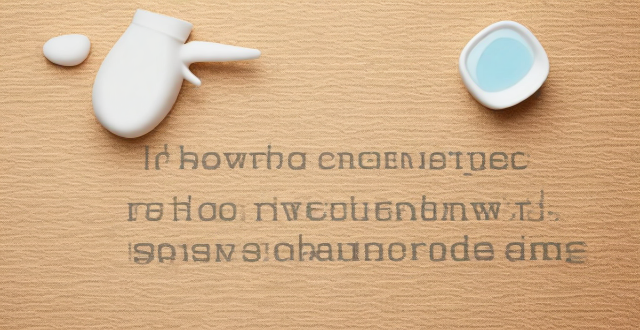
How can I organize my cleaning routine to save time ?
The text provides tips on how to organize your cleaning routine to save time. It suggests creating a cleaning schedule with daily, weekly, and monthly tasks; using multi-tasking products; decluttering regularly; involving family members in the process; and using technology to streamline the routine. By following these tips, you can plan, prioritize, and stay consistent with your cleaning schedule to save time.
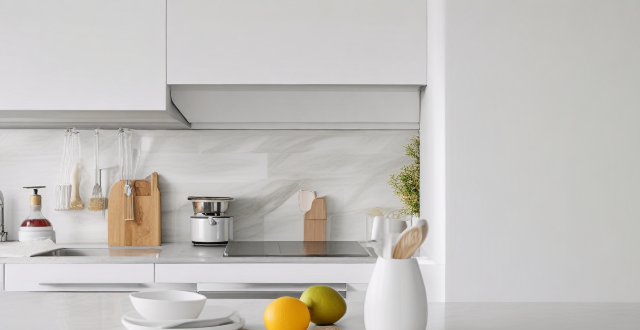
What are the best natural cleaning solutions for my home ?
Natural cleaning solutions are a great way to keep your home clean and fresh without exposing yourself or your family to harsh chemicals. Some of the best natural cleaning solutions for your home include white vinegar, baking soda, lemon juice, and castile soap. White vinegar removes stains, deodorizes surfaces, cuts through grease, and cleans windows without leaving streaks. Baking soda deodorizes fabrics, removes stains, cleans and polishes silverware and jewelry, and freshens drains and garbage disposals. Lemon juice dissolves soap scum and hard water deposits, brightens laundry, deodorizes kitchen surfaces, and removes rust stains. Castile soap cleans floors, walls, dishes, pots and pans, skin, and hair. By using these natural cleaning solutions, you can keep your home clean and fresh while reducing your exposure to harmful chemicals.

How can I repair a cracked tile in my bathroom or kitchen ?
Cracked tiles in bathrooms and kitchens can be repaired by following a step-by-step process. The process involves gathering necessary tools and materials, preparing the area, removing the damaged tile, cleaning the area, preparing the new tile, applying adhesive, grouting, cleaning and curing, and final touches. Wearing safety gear and using appropriate tools and materials are essential for a successful repair. Extensive damage may require professional assistance.
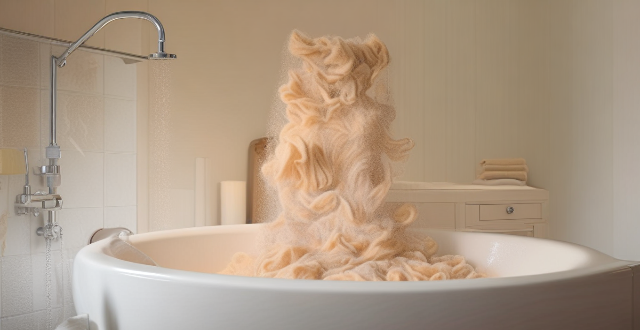
What are the best ways to remove stains from clothes ?
Removing stains from clothes requires pre-treatment, stain removers, home remedies, laundry detergent, and sometimes professional dry cleaning. Pre-treating the stain by blotting it with a clean cloth or paper towel is crucial. Commercial stain removers can be effective for various stains, while home remedies like baking soda and vinegar, hydrogen peroxide, and lemon juice can tackle stubborn stains. Applying laundry detergent directly to the stain and washing it afterward can also work. For delicate fabrics or persistent stains, professional dry cleaning may be necessary. By following these steps, most types of stains can be effectively removed from clothing.
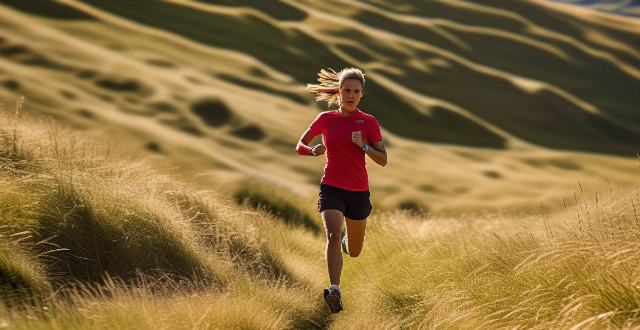
What are some tips for running uphill without getting too tired ?
To run uphill without getting too tired, warm up properly, shorten your stride, wear proper footwear, lean slightly into the hill, focus on breathing, take breaks if needed, incorporate hill training into your routine, stay hydrated, use hand gestures, and practice mindful running.

What are the best stretches for cooling down after a gym session ?
After a gym session, it's crucial to gradually cool down your body. Here are the best stretches for that: hamstring, quadriceps, calf, hip flexor, and back stretches. These exercises help reduce heart rate, lower blood pressure, prevent muscle soreness, improve flexibility, and range of motion. Remember to hold each stretch for at least 30 seconds and avoid bouncing to prevent injury.

Can regular cleaning and disinfection prevent the transmission of other viruses besides COVID-19 ?
Regular cleaning and disinfection can prevent the transmission of other viruses besides COVID-19, such as those causing colds and flu. The CDC recommends routine cleaning of frequently touched surfaces to reduce the risk of infection. Effective cleaning involves using soap or detergent to remove dirt, followed by disinfecting with a product labeled for the specific virus. High-touch surfaces should be prioritized, and proper ventilation and glove use are advised. Following these practices helps create a safer environment.

What are the economic implications of implementing a carbon tax ?
Implementing a carbon tax can have significant economic implications, including increased costs for businesses and consumers, potential revenue generation for governments, and both positive and negative impacts on economic growth. However, it could also encourage businesses to become more energy-efficient and innovative, potentially leading to new opportunities in clean energy and other sectors. Consumers may face higher prices but could benefit from a cleaner environment due to reduced carbon emissions.

What role do taxes and subsidies play in promoting environmentally friendly practices ?
Taxes and subsidies are two important tools that governments use to promote environmentally friendly practices. Taxes such as carbon tax, environmental taxes, and Pigouvian taxes can discourage unsustainable practices, while subsidies for renewable energy, energy efficiency, and sustainable agriculture can encourage the adoption of cleaner practices. By making unsustainable practices more expensive and sustainable practices more affordable, governments can encourage individuals and businesses to adopt cleaner practices and reduce their impact on the environment.
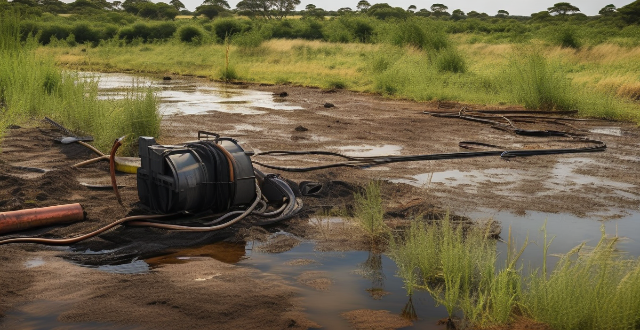
What are the primary causes of water pollution and how can they be mitigated ?
The primary causes of water pollution include industrial waste discharge, agricultural runoff, sewage and wastewater disposal, urban runoff, mining activities, and oil spills. To mitigate these causes, strategies such as stricter effluent standards, cleaner production methods, sustainable agriculture practices, improved sewage treatment, urban runoff control, responsible mining practices, and oil spill prevention and response should be implemented.

Is there a natural way to clean stains off my clothes ?
Removing stains from clothes can be challenging, but natural methods like using white vinegar, baking soda, lemon juice, hydrogen peroxide, and salt can effectively clean various types of stains. These techniques are gentle on the environment and clothing.

Can circular economy policies help reduce waste and pollution ?
Circular economy policies can significantly reduce waste and pollution by promoting reuse, recycling, and cleaner production methods. These policies incentivize businesses to design products that are easier to maintain and recycle, support sustainable business models like leasing and Product as a Service (PaaS), and encourage consumers to make environmentally friendly choices. Through such measures, the need for new raw materials decreases, energy consumption is reduced, and waste is diverted from landfills, all of which contribute to lower emissions and a cleaner environment.
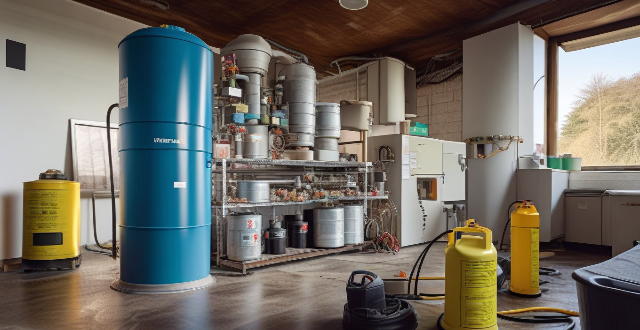
Can I substitute coconut oil for other oils when making my own cleaning solutions ?
Coconut oil can be substituted for other oils in homemade cleaning solutions due to its antibacterial properties, natural scent, and safety. It can be used in all-purpose cleaners, furniture polish, and glass cleaners. However, it is solid at room temperature and may make the solution thicker. Additionally, it has a long shelf life but can go rancid if exposed to heat or light for extended periods.

How can I improve my reaction time and agility in sports ?
Reaction time and agility are essential components of athletic performance, determining how quickly an individual can respond to a stimulus and move their body effectively. To improve these skills, one should practice specific drills such as the reaction time ladder, cone weave, and box jumps. Incorporating strength training exercises like squats, lunges, deadlifts, and plyometric exercises can also enhance overall athleticism. Additionally, focusing on flexibility and mobility through stretches and foam rolling can reduce the risk of injury and improve range of motion. By implementing these strategies, individuals can enhance their reaction time and agility in sports.

In what ways can technology accelerate energy transition ?
Energy transition is the process of shifting from traditional, non-renewable energy sources to cleaner and more sustainable alternatives. Technology plays a pivotal role in this transition by improving efficiency, reducing costs, and enhancing the performance of renewable energy systems. Key areas where technology can make a difference include renewable energy production, energy storage, smart grids, energy efficiency, and carbon capture and utilization. Innovations in these areas promise a cleaner, more sustainable, and resilient energy future for all.

How do building energy efficiency standards impact the environment ?
**Summary:** Building energy efficiency standards positively impact the environment by reducing greenhouse gas emissions, conserving natural resources, enhancing air quality, and promoting energy innovation. These standards lead to more energy-efficient buildings, reduced dependence on fossil fuels, cleaner air, and advancements in sustainable technologies.

What role does public transportation play in reducing air pollution ?
Public transportation plays a crucial role in reducing air pollution by providing an alternative to individual car use. It contributes to cleaner air through various ways, including reducing emissions, encouraging sustainable practices, supporting green infrastructure, influencing policy and planning, raising environmental awareness, and facilitating smart growth. By offering efficient, sustainable alternatives to driving, cities can work towards reducing their carbon footprint and improving the health of both their citizens and the environment.

What are the challenges faced by companies when transitioning to clean production technologies ?
Transitioning to clean production technologies is a crucial step for companies looking to reduce their environmental impact and comply with increasingly stringent regulations. However, this transition is not without its challenges, including high initial costs, lack of knowledge and skills, regulatory uncertainty, resistance to change, and limited access to financing. Overcoming these obstacles requires careful planning, investment, and commitment from all levels of the organization. By addressing these challenges head-on, companies can successfully adopt cleaner production methods and position themselves as leaders in sustainability.